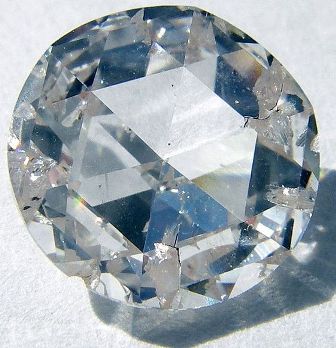- Series:Creation, God’s Design, Transcript English
Isaiah 40:28
“Hast thou not known? hast thou not heard, [that] the everlasting God, the LORD, the Creator of the ends of the earth, fainteth not, neither is weary? [there is] no searching of his understanding.”
Perhaps you have read one of the many news articles about an amazing new process for making diamonds. The new process uses simple heat to make diamonds out of anything that has carbon in it.
Diamonds are made of carbon atoms – that black stuff in soot – which are tightly arranged into the careful rows of a crystal. The result is a clear crystal, harder than anything on earth. Artificial diamonds have long 
Now diamonds can be made cheaply and easily out of most anything. One researcher even made a diamond out of peanut butter, although he reported that the diamonds had a greenish tinge to them because of the nitrogen in peanuts.
We have only begun to scratch the surface, so to speak, in learning about the wonderful abilities the Creator built into the material world. We are only beginning to discover the depths of His wisdom. Such discovery is in keeping with His instructions to us to subdue the earth.
Prayer:
Dear Father, in amazement I thank You for the wonderful things You have made, only a little of which we have learned so far. I pray that more Christian young people would go into science careers, remaining faithful to the truth of Your Word and faithful to Your charge to subdue the earth. In Jesus’ Name. Amen.
Notes:
Photo: A rose-cut synthetic diamond created by Apollo Diamond using a patented chemical vapor deposition process. Courtesy of Steve Jurvetson. Licensed under the Creative Commons Attribution 2.0 Generic license.
